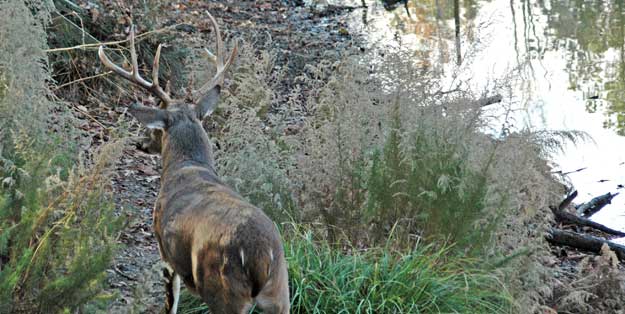Brandon Bobo | Mossy Oak ProStaff

There’s some good research available that shows that some of the best, older-age-class buck deer and big gobblers are harvested fairly deep in the woods where most hunters don’t go on public lands. That’s the reason I pack my lunch before I leave home, I leave my car for about a 1-2 hour walk to my tree stand, and I stay in a stand in the deep woods until dark. When I go into those regions, no one knows where I’m going, and when I leave there, no one knows where I’ve been.
Deer and turkeys have learned that hunters start leaving the land, either to go to work or to go home, usually by 9 or 10 a.m. I’ve observed that many deer move in the middle of the day, and many turkeys are gobbling in the middle of the day. If you don’t want to hunt all day on public lands, you may want to sleep in and not start hunting until 9 a.m. or so.
During bow season in Alabama, I’m looking for good stands of oaks that are producing a good number of acorns. Often I’ll find those oak trees in Streamside Management Zones (SMZs are areas of forests adjacent to bodies of water like ponds, rivers, creeks and intermittent streams that serve as filter strips for surface water runoff.) between two different ages of stands of pine trees. When I had a close encounter with a big buck last year, I was hunting in-between two, very tall ridges that had been thinned and burned regularly. There was really good habitat on both sides of the two high ridges and a lot of mast production along that stream that was an SMZ.
Timber harvesters in Alabama must leave trees standing at least 35 feet on either side of a stream in an SMZ, so there’s a 70-foot-wide strip or more of good timber in many of these areas. That’s where I find nut-producing trees like white oaks, red oaks, pin oaks and water oaks. During bow season, that’s the food source that most deer are keying in on public lands open to hunting. I’ve learned that if I can locate a good crop of white oaks dropping acorns, more than likely I’ll see a good number of deer there during bow season. Red oaks are more reliable oaks typically, so keep an eye out for red oak trees as you scout. Red oak acorns are viable for wildlife through winter when deer need the nutrition the most.



























